When he came to Mumbai, India, in 2010, Mario Pfeifer faced a problem that had already vexed Pier Paolo Pasolini and Louis Malle, who traveled to India in 1968, and many cinematic auteurs after them: What to show of a country and a culture that still strike the Western filmmaker as mostly unfamiliar and exotic? How would they avoid a colonialist perspective replete with standards of value they have brought with them? How might they catch a glimpse of what lies beyond the stereotypes about social inequality, about the misery of lower-caste life and the upwardly mobile middle classes, that dominate the critical picture of India in the minds of Westerners? Louis Malle thought it was impossible. In his classic "L’Inde Fantôme", he spends 378 minutes commenting on the limitations of his own view.
In Mumbai, Indien, stand Mario Pfeifer 2010 vor dem gleichen Problem, das schon Pierre Paolo Pasolini und Louis Malle 1968 bei ihren Indienreisen beschäftigte und zahlreiche Kinoautoren nach ihnen: Was lässt sich von einem Land und einer Kultur zeigen, die für Filmemacher westlicher Prägung meist noch immer unbekannt und exotisch scheinen? Mehr als eine kolonialistische Perspektive voller mitgebrachter Wertmaßstäbe? Wie ließe sich hinter die Stereotypen von sozialer Ungleichheit, vom Elend niederer Kasten und von aufstrebenden Mittelschichten schauen, die sich im kritischen, westlichen Indienbild allenthalben finden? Louis Malle schien das unmöglich. In seinem Klassiker "L‘Inde Fantôme" kommentiert er während 378 Minuten die Begrenztheit seines eigenen Blicks.
It is this problem that Mario Pfeifer’s 35 mm production "A Formal Film in Nine Episodes, Prologue & Epilogue" addresses. We show the work as a multipart installation on three floors. Pfeifer uses lay actors to stage various perspectives on everyday life in Mumbai. Held together by a loose narrative, the open sequence of episodes arranges local sceneries as though in a kaleidoscope: a cab ride, fishermen on a river, a visit to a temple, workers in an ice factory. Pfeifer seeks out places that offer themselves as symptomatic sites to a social critique, talks to the citizens, researches backgrounds. He reenacts situations based on real situations and then shoots them a single time. Yet his gaze through the camera finally gives a surprising phenomenological twist to such methods of documentarism and realism: its attachment is solely to what is visible. Instead of looking for a filmic representation that seeks to do justice to the social world he finds, he gleans atmospheric details. And instead of offering a penetrating critique of what he sees, he focuses entirely on formal aspects: on colors and the qualities of materials, on stretches of time and sequences of motion, on sounds.
Diesem Problem stellt sich Mario Pfeifers 35mm-Produktion "A Formal Film In Nine Episodes, Prologue & Epilogue", die wir als mehrteilge Installation auf zwei Etagen zeigen. Mit Laiendarstellern inszeniert Pfeifer verschiedene Perspektiven auf den Alltag in Mumbai. Narrativ lose zusammengehalten, werden in einer offenen Folge von Episoden lokale Szenerien arrangiert wie in einem Kaleidoskop: eine Taxifahrt, Flussfischer, der Besuch eines Tempels, Arbeiter in einer Eisfabrik. Pfeifer geht an Orte, die sich einer Sozialkritik als symptomatisch anbieten, spricht mit den Akteuren, recherchiert Hintergründe. Er stellt Situationen nach, die auf realen Gegebenheiten basieren und dreht sie dann ein einziges Mal. Doch solchen Verfahren des Dokumentarismus und Realismus gibt sein Blick durch die Kamera schließlich eine überraschende phänomenologische Wendung: Er heftet sich allein ans Sichtbare. Statt nach einer filmischen Repräsentation, die der vorgefundenen sozialen Welt gerecht werden möchte, sucht er nach atmosphärischen Details. Anstatt das Gesehene kritisch zu durchdringen, konzentriert er sich ganz aufs Formale: auf Farben und Materialeigenschaften, auf Zeiträume und Bewegungsabläufe, auf Töne.

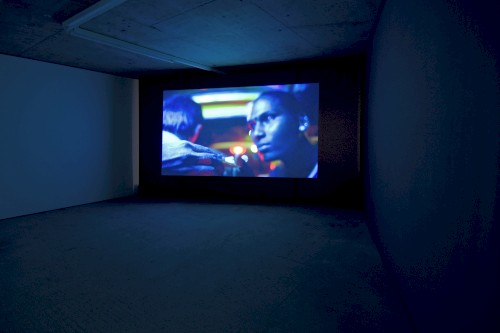
Pfeifer knows that there is no escaping the Western conditioning that informs his eye—but that does not stop him from seeing. So he formalizes what is happening and captures the inherent dynamism of the cinematographic apparatus in filmic tableaux he distributes across an exhibition architecture built for this purpose. Its rigorous and mannerist formal calculation suggests a kinship between his images and the paintings Gustave Caillebotte created around 1875, works that Jeff Wall also drew on. And not unlike Wall, Pfeifer not only does not align what can be seen of social landscapes, what can be shown of them, and what can be known about them—he does not even offer his audiences a coherent perspective of interpretation. Looking at what are allegedly social hot spots of a “developing country,” "A Formal Film" arrives at motifs of a disturbing beauty that defy easy consumption, either as exotica or as critical clichés. Mumbai remains, for the time being, the phenomenon that it already was for Louis Malle. Yet unlike Malle, Pfeifer distances himself from documentarism, casting even the posture of commentary and critical information in doubt: documentary social critique itself appears as a form of colonialist encroachment.
After presentations at the MMK, Frankfurt, and the Frankfurter Kunstverein, we show "A Formal" Film in Pfeifer’s first solo exhibition at a gallery. The work will then travel to the Nassauischer Kunstverein, Wiesbaden, and to New Delhi. A book will be published in 2012. Mario Pfeifer, who was born in Dresden in 1981, currently lives in Berlin.
Text and photos: Alexander Koch / Translation: Gerrit Jackson
Pfeifer weiß, dass er seinem westlich konditionierten Auge nicht entkommt - aber das hindert ihn nicht am Sehen. Also formalisiert er das Geschehen und fängt die Eigendynamik des cinematografischen Apparats in Filmtableaus, die er in einer eigenen Ausstellungsarchitektur verteilt. Ihr strenges, manieristisches Formkalkül rückt seine Bilder dabei in die Nähe der Gemälde Gustave Caillebottes um 1875, die wiederum Jeff Wall aufgriff. Und ähnlich wie Wall bringt Pfeifer das, was sich von sozialen Landschaften sehen, was sich von ihnen zeigen und was sich über sie wissen lässt, nicht nur nicht zur Deckung - er offeriert seinen Publika erst gar keine kohärente Deutungsperspektive. An vermeintlichen sozialen Brennpunkten eines „Entwicklungslandes“ findet "A Formal Film" 51 Minuten lang Motive von verstörender Schönheit, die sich nicht ohne Weiteres besetzen lassen, weder mit Exotismen noch mit kritischen Klischees. Mumbai bleibt so zunächst jenes Phantom, das es schon für Louis Malle war. Aber im Gegensatz zu Malle distanziert sich Pfeifer vom Dokumentarismus und zieht den kommentierenden, aufklärerischen Habitus dokumentarischer Sozialkritik selbst als kolonialistischen Übergriff in Zweifel.
Nach Präsentationen im MMK Frankfurt und dem Frankfurter Kunstverein zeigen wir "A Formal Film" in Pfeifers erster Galerie-Einzelausstellung. Stationen im Nassauischen Kunstverein Wiesbaden und in Neu Delhi folgen. 2012 erscheint eine Publikation. Mario Pfeifer, geboren 1981 in Dresden, lebt derzeit in Berlin.
Text und Fotos: Alexander Koch
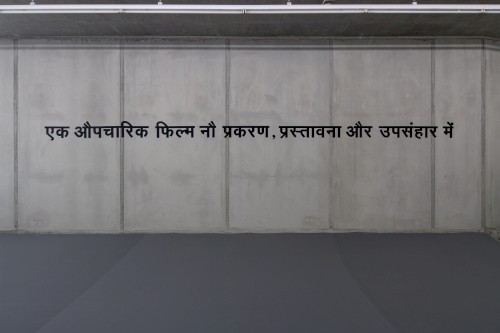
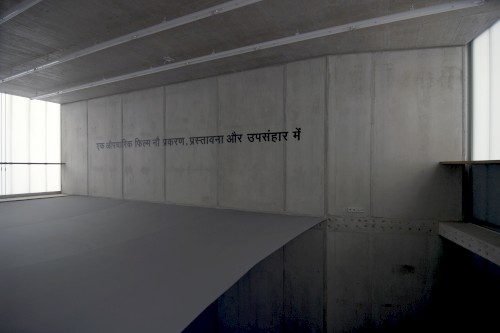
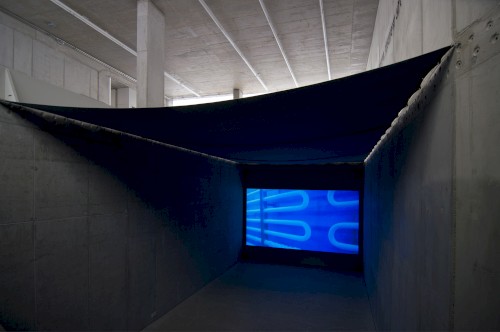
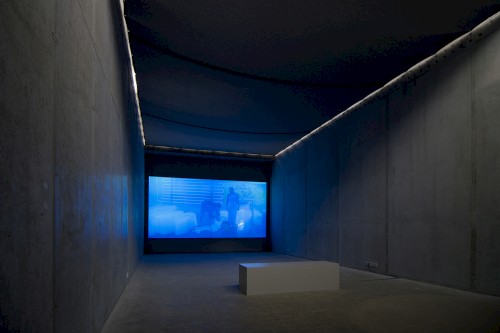
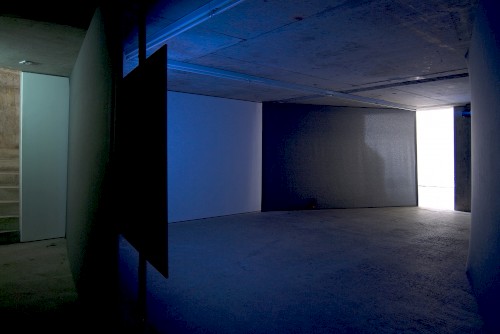
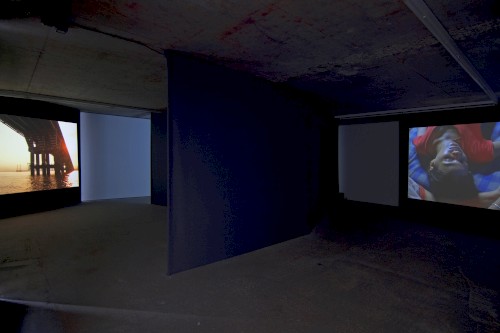
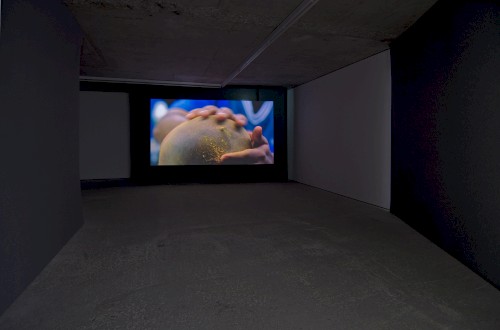
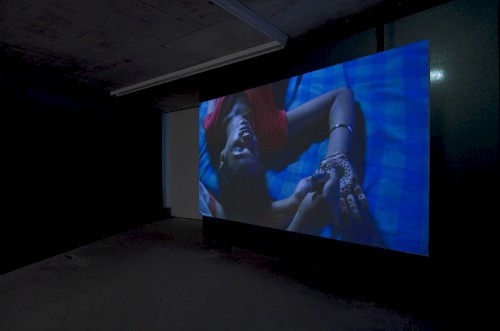
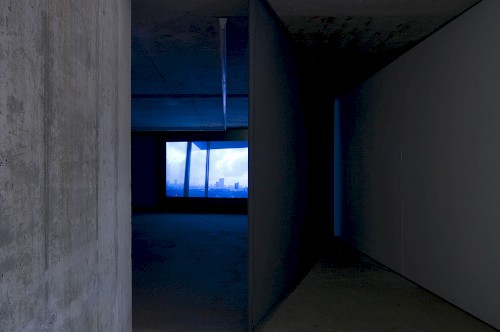
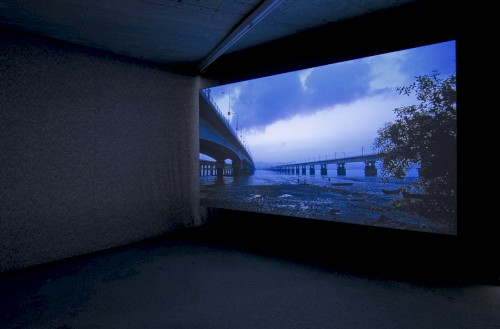
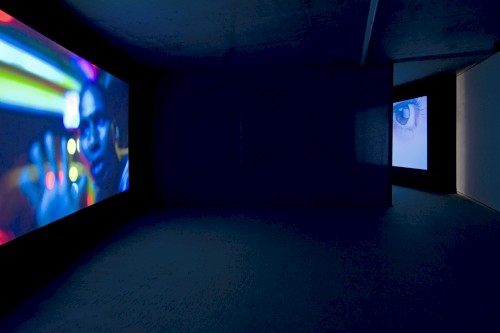
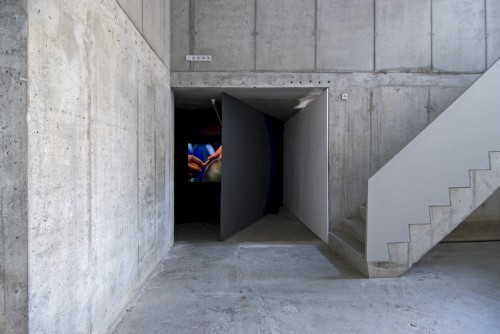

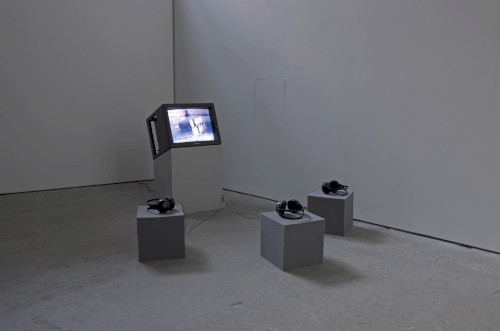
- Current
- Upcoming
- 2026
- 2025
- 2024
- 2023
- 2022
- 2021
- 2020
- 2019
- 2018
- 2017
- 2016
- 2015
- 2014
- 2013
- 2012
- 2011
- 2010
- 2009